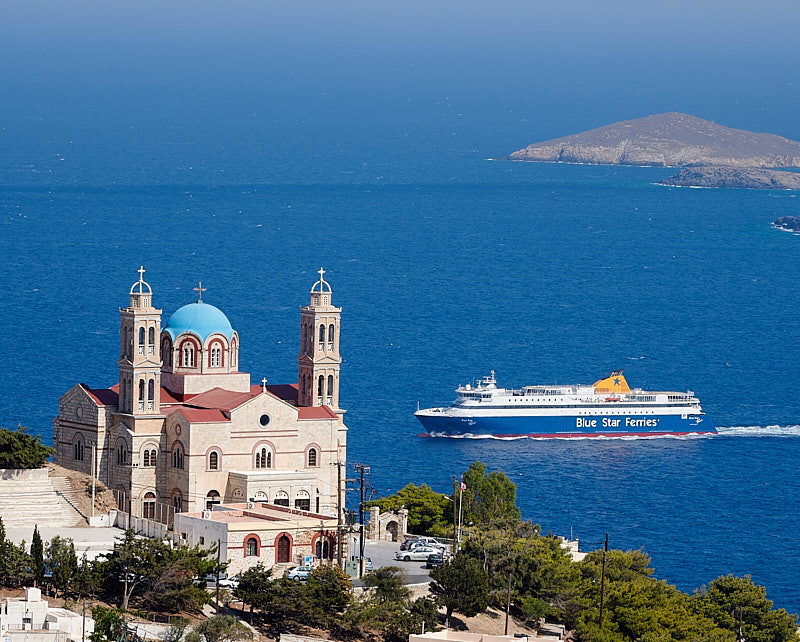August 11, 2023
According to the recent annual report of XRTC, for the last 15 years, the Hellenic Coastal Shipping has been operating in a survival mode.
- In the last fifteen years, the Hellenic Coastal Shipping has found itself in a trend of introversion, with fewer attempts to expand its activities, since the essential goal was to avoid bankruptcy and maintain the operational capabilities of the ferry companies. In that way it managed to maintain the cohesion of the Greek territory as well as the country’s connectivity with the European Union through the lines of the Adriatic Sea.
- Passenger traffic in 2022 increased by 36% (17.5 million passengers), while the increase in vehicle traffic amounted to 12% (3.7 million vehicles).
- The current situation within the Greek Ferry scene can be characterized as extremely worrying as in the last five years, the accumulated negative economic results are such that not only do not allow the renewal of the fleet, but also put limits in the viability of the ferry companies due to the successive economic, geopolitical, and health crisis.
- This argument is being supported by both the EBITDA margin and revenue per ticket numbers that are steadily declining. The ferry operators’ EBITDA margin between the years 2018 and 2022 fluctuates steadily at 10%. In order for a ferry company to be able to carry out a fleet renewal investment program, the profit margin should be at least 25%. So, bearing in mind the fact that 86% of the Greek Coastal fleet that is currently in service are more than 20 years old, the task of a fleet renewal seems huge.
- Currently, the renewal of the fleet should be carried out through newbuilding ships and not with second-hand ships of past technology. In that way, the recent ship purchases are disappointing considering that the ships entering the fleet are 40 or at least 30-year-old. That is not a very optimistic development bearing in mind that twenty years ago the Greek Ferry fleet was the most modern in Europe.
- As far as the lack of satisfactory profitability is concerned, the report notes that the same weak conditions are those that impose to a large extent the pricing policies that have been followed during the last two years. Although they are unpopular, it is the only way for the ferry operators to cover their obligations towards employees, suppliers, ship maintainers or even the creditors of the fleet, avoiding unpleasant bankruptcy developments, which mainly have social effects (example NEL Lines, G.A. Ferries, Agoudimos Lines, SAOS Ferries etc).
- These developments have led the Greek ferry market to an extreme concentration of the number of companies as well as to the creation of intense oligopolistic conditions, which may in the future lead to higher ticket prices and probably to increased social costs that will come up from the need to serve lines with reduced commercial interest.
- One of the main challenges facing the Greek Ferry Scene is the aging of the fleet. The average age of the Greek Coastal Fleet is 28 years, which is however younger than the average age of the European Coastal Fleet!
- The last Greek ferry fleet renewal period was completed in the mid-2000s. Since then, ferry operators did not proceed with the construction of newbuilding ships but replaced their older tonnage mainly with second-hand ships, as a result of the financial crisis and the lack of funding. However, the environmental regulations that are currently in force, no longer justify such incentives.
- Greek Coastal market is called upon to find technical solutions for the construction of new environmentally friendly ships, but also significant funding.
- The Hellenic Ministry of Shipping is proceeding with the planning and establishment of criteria for the replacement of coastal shipping vessels, with the aim of reducing gas emissions and the “green” transition of the fleet.
- For that reason, it aims to create a private fund for the renewal of the coastal fleet, with the recruitment of a technical consultant through an international tender that will be financed by the Recovery Fund (RRF).
- The biggest development within the Greek Ferry Scene is the Competition Committee’s official approval of the Attica Group – Anek Lines merger. The unified Attica group will leave behind the burdens of the past and will be able to move forward in the future.
- Greek Ferry Scene is led by two ferry companies that are among the 10 largest companies in the world and Europe, the Grimaldi Group and Attica-Group. However, there is a fragmentation in the domestic market, as it includes many single-vessel companies with old ships. Small ferry companies have difficulties to raise capital from commercial banks as well as being supported by foreign trade support organizations due to their small balance sheets.
- All ferry companies will be forced and will have to implement modern management models adapted to ESG standards, in which emphasis must be given on corporate governance and transparency. The absence of this condition is a risk both for the market and society, while the responsibility does not fall only on the companies but also on the State.

